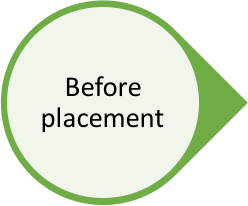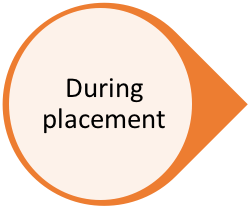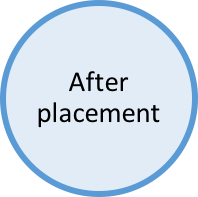Degree Apprenticeships Toolkit
We’ve pulled together a checklist of things for university departments to consider when proposing to get involved in degree apprenticeships. It’s still evolving so please do contact us if you have experience or advice you would like to add.
Funding arrangements
There are two crucial differences in the funding arrangements for apprenticeships compared to conventional degree courses. Firstly the body responsible for the funding is the Skills Funding Agency or SFA rather than HEFCE, and secondly with the contractual arrangements with the employer rather than the student as the primary customer (the university is essentially a contracted supplier of education services to the employer under the apprenticeship model). The government also pays a contribution towards the cost to a pre-agreed maximum sum defined at the point of approval with the SFA. These different funding mechanisms have a very different set of terminology and processes than those which universities are more commonly familiar.
An HEI needs to (or apply to) be included on the Skills Funding Agency’s Register of Training Organisations (ROTO). SFA will announce when ROTO is open to new applicants. In addition to inclusion on ROTO an HEI will until the introduction of the Apprenticeship levy need to secure an SFA ‘allocation’ to claim funding to deliver Degree Apprenticeships. SFA has in the last 15 months run two procurement rounds opening ROTO to HEIs and inviting HEIs to apply for an allocation. HEIs that are not on ROTO and do not have an allocation should prepare for forthcoming procurement rounds. HEIs not on ROTO may also want to consider how they can deliver Higher and Degree Apprenticeships with an FEC that is on ROTO and has an allocation.
In summary, to deliver a higher apprenticeship an HEI must be either:
- listed on the Skills Funding Agency (SFA) Register of Training Organisations (ROTO) and already receive funding for apprenticeship delivery from the SFA
- a subcontractor to another HEI or FEI listed on the SFA’s Register of Training organisations who are in receipt of funding for apprenticeships from the SFA
- successful applicants to an SFA HEI expression of interest for higher and degree apprenticeship delivery as outlined below
Any HEI who already holds an SFA funding agreement which contains an apprenticeships allocation can go ahead and deliver higher and degree apprenticeships.
For HEIs who do not hold an existing contract to deliver apprenticeships with the SFA, the SFA ran its first expression of interest (EOI) round for HEIs with a clear plan for higher and degree apprenticeship delivery as part of their offer to employers in March 2016; this complements the additional £13m which government allocated to further education institutions (FEIs) in late 2014 to expand their higher apprenticeship provision. Further information is available by registering on the SFA’s procurement portal.
https://www.gov.uk/guidance/skills-funding-register-for-opportunities-to-tender
HEIs may deliver the whole apprenticeship directly or, act as the lead apprenticeship provider, sharing the delivery by subcontracting with other HEIs or FEIs.
The SFA is also offering automatic entry onto the ROTO to HEIs meeting specific criteria.
- Those in receipt of direct public grants for HE.
- Those including institutes of the University of London.
- Those who have the right to award one or more types of UK degree
- Those who have not had any material concerns raised as part of the HEFCE process of financial risk assessment.
Funding
The standard undergraduate fee is £9k per annum at present. This may of course be varied in the contract with the employer, by agreement. The employer is liable for the course fees (not the student/apprentice). HEFCE have also stated that the higher cost subject premium will be available for eligible subjects (as for standard degree programmes).
In the funding model under trial for apprenticeship standards during 2014 to 2015 and 2015 to 2016, the government contributes two-thirds of the total agreed price, up to a cap, with employers contributing the other third in cash, all paid to the lead provider in a payment schedule agreed with the employer.
Funding is quite different from standard degree programmes. It is earned against actual activity. All apprentices must have an Individual Learner Record (ILR) file. Payments are earned by the HEI by confirming through the apprentice’s ILR record that they have received the latest employer one-third payment against their agreed payment schedule. ILR completion triggers the government’s two-thirds payment.
Development funding
The Department for Business, Innovation and Skills has also recently announced the Degree Apprenticeship Development Fund. The fund will provide £8 million starting in academic year 2016/17 to help universities and colleges work with employers to develop new degree apprenticeships ready for delivery from academic year 2017/18. The Skills Funding Agency will receive a further £2 million to encourage more learners to take up degree apprenticeships. Queries about how to apply for funding can be sent to: degreeapprenticeships@hefce.ac.uk.
Any views, thoughts, and opinions expressed herein are solely that of the author(s) and do not necessarily reflect the views, opinions, policies, or position of the Engineering Professors’ Council or the Toolkit sponsors and supporters.


